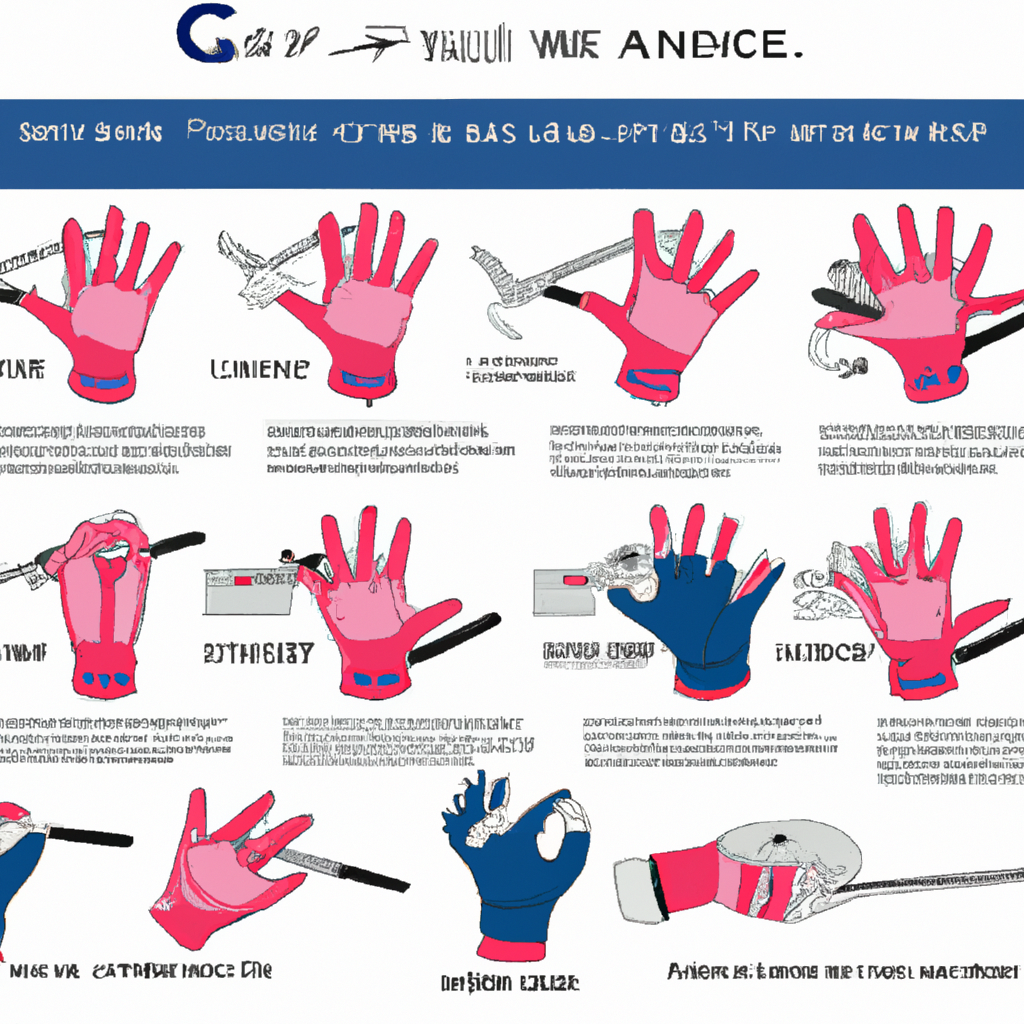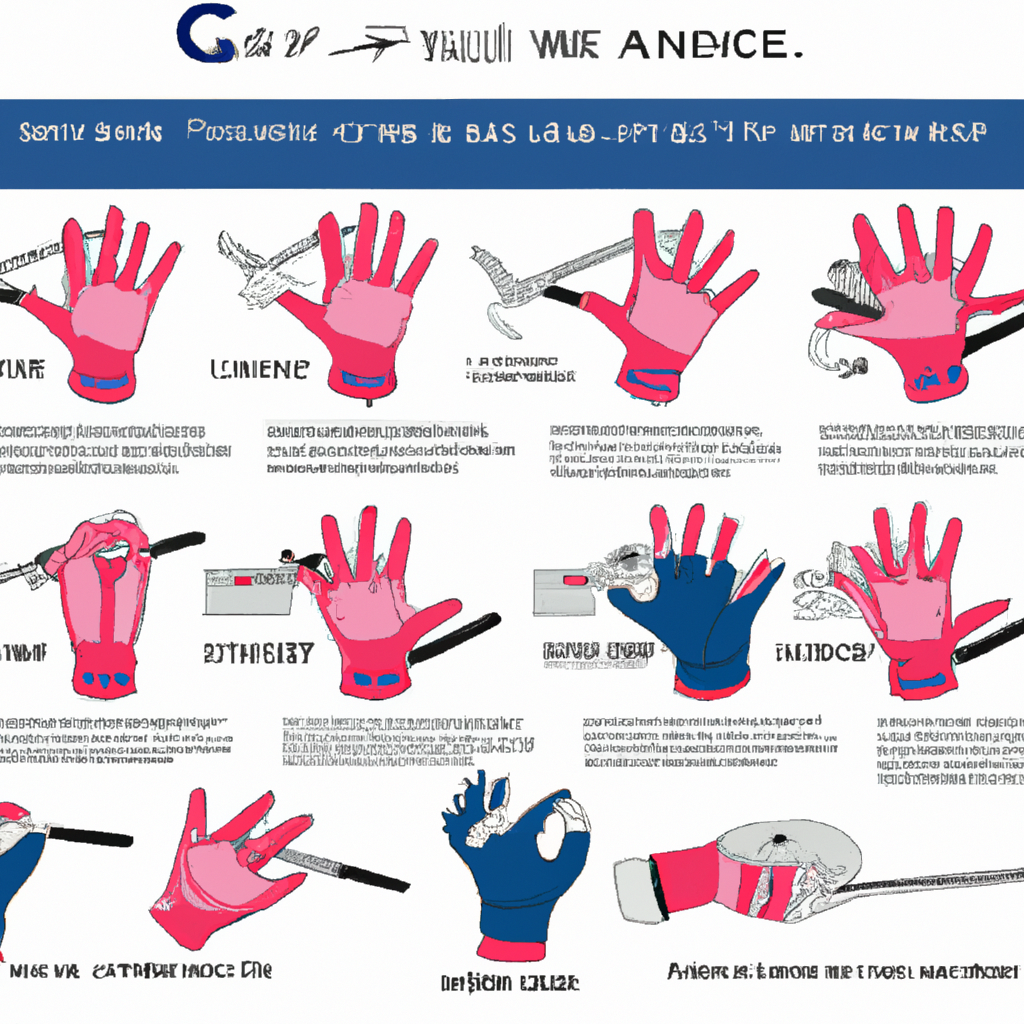We may earn money or products from the companies that may be mentioned in this post.
So, you’ve just picked up the exciting sport of golf and now you’re wondering how to properly fit a golf glove. Look no further! In this article, we’ll walk you through the ins and outs of finding the perfect fit for your golf glove. From measuring your hand size to testing its snugness, we’ve got you covered. Putting on a well-fitted golf glove is not only crucial for your performance on the course but also ensures a comfortable and confident grip. Let’s get started on this journey to finding your perfect golf glove fit!

Choosing the Right Size
Measuring Your Hand
Before you start the process of finding the perfect golf glove, it’s important to measure your hand. To do this, take a flexible measuring tape and wrap it around the widest part of your hand, which is typically just below your knuckles. Make sure the tape is snug but not too tight. Take note of the measurement in inches or centimeters.
Determining Your Glove Size
Once you have your hand measurement, you can use it to determine your glove size. Different brands may have slightly different sizing charts, so it’s always a good idea to refer to the specific manufacturer’s guidelines. Generally, if your hand measurement falls between sizes, it’s recommended to go with the larger size. Having the right size will ensure optimal comfort and performance on the golf course.
Trying Different Sizes
When choosing the right size, it’s always a good idea to try on a few different options. Each golfer’s hand shape and finger length can differ, so what may fit perfectly for one person may not work for another. It’s also important to consider your personal preference in terms of how tight or loose you prefer the fit to be. Trying on different sizes will give you a better understanding of what feels most comfortable and allows for the best range of motion.
Understanding the Fit
Snug but not Tight
When wearing a golf glove, it should fit snugly but not be too tight. It should feel like a second skin, providing support and stability for your grip without restricting blood flow or causing discomfort. Avoid gloves that are too loose as they can affect your grip and potentially lead to slipping during your swing.
Fingers Fit
The fingers of the golf glove should fit closely without any excess material. You want to be able to flex and move your fingers freely without feeling restricted. If the glove is too long in the fingers, it can cause discomfort and interfere with your grip on the club.
Thumb Fit
The thumb area of the glove should also fit snugly without any excess material. You should be able to comfortably flex and move your thumb without feeling restricted. If the glove is too tight in this area, it can cause discomfort and affect your range of motion.
Palm Fit
The palm of the glove should fit comfortably with no excess material or wrinkles. When gripping the club, you want the palm of the glove to lay flat against your hand without any bunching up or slipping. A proper palm fit ensures optimal control and feel during your swing.
Inspecting the Glove
Check for Wrinkles
Before making a final decision on a glove, carefully inspect it for any wrinkles or creases. Wrinkles can indicate improper sizing or poor craftsmanship, which can affect both comfort and performance. Smooth out any wrinkles before trying on the glove to get an accurate sense of the fit.
Examine the Seams
Inspect the seams of the glove to ensure they are well-constructed and secure. Look for any loose threads or fraying, as these can indicate a lower quality glove that may not hold up well over time. Strong and durable seams are essential for a glove that will withstand the rigors of the golf course.
Evaluate the Closure
Golf gloves typically have a closure mechanism, such as a hook and loop fastener or a snap button, to secure the glove around your wrist. Test the closure to ensure it is easy to use and provides a secure fit. A properly functioning closure will keep the glove in place throughout your swing and prevent it from slipping or moving during gameplay.
Fitting Process
Ensure Dry Hands
Before putting on the glove, it’s important to ensure that your hands are dry. Moisture can affect the fit and feel of the glove, so towel off any excess sweat or moisture. Dry hands will also help prevent the glove from slipping while you play, allowing for better control and grip on the club.
Put on the Glove Correctly
To put on the glove correctly, start by inserting your fingers into the designated finger openings. Make sure each finger is fully extended and properly seated in its respective slot. Pull the glove up towards your wrist, ensuring that it fits snugly but comfortably.
Adjust the Fingers
Once the glove is on, take a moment to adjust the fingers. Gently pull each finger towards the tip to eliminate any excess material and ensure a proper fit. This will help prevent any discomfort or interference with your grip.
Secure the Closure
After adjusting the fingers, secure the closure mechanism around your wrist. Ensure that it is snug enough to hold the glove in place, but not so tight that it restricts blood flow or causes discomfort. The closure should provide a secure fit without digging into your skin.
Testing the Fit
Grip a Golf Club
A crucial part of testing the fit of a golf glove is gripping a golf club. Take a club in your hand and go through your normal gripping motion. Pay attention to how the glove feels in your hand and if there are any areas that feel tight or restrictive. The glove should enhance your grip and provide a secure connection between your hand and the club.
Evaluate Mobility
While wearing the glove, move your fingers and hand through a range of motions. Flex and extend your fingers, make a fist, and rotate your wrist. The glove should allow for unrestricted movement and flexibility. If you feel any tightness or discomfort, it may be a sign that the glove is not the right size or fit for you.
Check for Excess Material
During the fitting process, check for any excess material in the palm, fingers, or thumb of the glove. Excess material can interfere with your grip and affect the overall feel of the glove. Smooth out any wrinkles or bunching to ensure a comfortable and proper fit.
Ensure Proper Feel
The most important aspect of a well-fitted golf glove is the feel. It should feel like a second skin, allowing for a natural and comfortable grip on the club. You should have a sense of connection and control, allowing you to confidently swing and strike the ball. If the glove feels too tight, loose, or uncomfortable, it’s worth trying different sizes or styles until you find the perfect fit.
Breaking In the Glove
Using Golf Glove Conditioner
To break in a new golf glove and maximize its lifespan, consider using a golf glove conditioner. Apply a small amount of the conditioner to the palm, fingers, and thumb of the glove, then gently massage it in. This will help soften the leather and improve its flexibility. Follow the manufacturer’s instructions for the specific conditioner you are using.
Wearing the Glove during Practice
Another effective way to break in your new golf glove is to wear it during practice sessions. As you play and practice your swings, the glove will naturally conform to your hand and become more comfortable over time. Be sure to give it some time to break in before using it for an important round of golf.
Caring for Your Glove
Cleaning Instructions
To keep your golf glove in optimal condition, it’s important to clean it regularly. Check the manufacturer’s instructions for cleaning recommendations specific to your glove. In general, most leather gloves can be gently hand-washed using mild soap and water. Avoid using harsh chemicals or excessive scrubbing, as this can damage the leather or synthetic material.
Storing the Glove Properly
When not in use, it’s important to store your golf glove properly to maintain its shape and extend its lifespan. Avoid leaving it in extreme heat or direct sunlight, as this can cause the material to dry out and crack. Instead, store your glove in a cool, dry place away from direct sunlight to ensure it stays in optimal condition.
When to Replace Your Glove
Signs of Wear and Tear
Over time, your golf glove may show signs of wear and tear. Pay attention to any holes, tears, or excessive fraying in the material. The grip of the glove may also wear down, affecting your control and feel. If you notice any significant damage or if the glove no longer provides a secure fit, it’s time to replace it.
Frequency of Replacement
The frequency at which you need to replace your golf glove will depend on various factors, such as how frequently you play golf, the quality of the glove, and how well you care for it. On average, most golfers replace their gloves every few months or after several dozen rounds. However, it’s important to monitor the condition of your glove regularly and replace it when necessary to ensure optimal performance on the course.
Different Types of Golf Gloves
Leather Gloves
Leather gloves are a popular choice among golfers due to their durability, breathability, and superior feel. They conform to the hand over time and provide a comfortable and secure grip on the club. Leather gloves require proper care and maintenance to ensure their longevity.
Synthetic Gloves
Synthetic gloves are made from materials such as polyester or nylon. They are often more affordable than leather gloves and can provide excellent durability and flexibility. Synthetic gloves are typically lighter and offer good breathability, making them a popular choice for golfers seeking comfort and performance.
Weather-Resistant Gloves
For golfers who play in various weather conditions, weather-resistant gloves offer protection against rain, wind, and cold temperatures. These gloves are designed with specialized materials that repel water and provide insulation to keep your hands warm. Weather-resistant gloves allow you to maintain a secure grip even in challenging weather conditions.
Benefits of Wearing a Well-Fitted Golf Glove
Improved Grip
One of the main benefits of wearing a well-fitted golf glove is an improved grip on the club. The glove provides a secure connection between your hand and the club, preventing slipping and promoting stability during your swing. A proper grip enhances your control over the club, allowing for more accurate and consistent shots.
Reduced Blisters and Calluses
By providing a layer of protection, a well-fitted golf glove can help reduce the likelihood of developing blisters and calluses on your hands. The friction and pressure created by repetitive swinging can cause irritation and discomfort. Wearing a glove that fits properly minimizes these issues and allows for a more enjoyable and pain-free golfing experience.
Enhanced Performance
A glove that fits well and feels comfortable on your hand can greatly enhance your overall performance on the golf course. It allows you to swing more confidently and effectively, resulting in improved accuracy and distance. A well-fitted glove also contributes to better control and feel, enabling you to execute shots with greater precision.
Finding the perfect golf glove is a crucial step in building a successful and enjoyable golf game. By understanding how to choose the right size, fit, and type of glove, as well as how to care for it properly, you can ensure a comfortable and secure grip every time you tee off. With a well-fitted glove, you’ll be able to focus on your swing and fully enjoy the game of golf.
